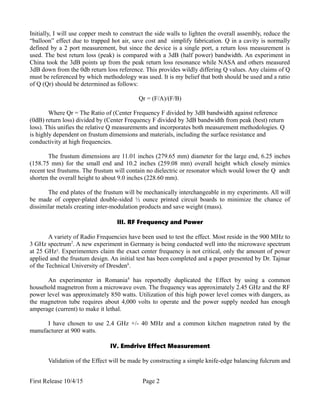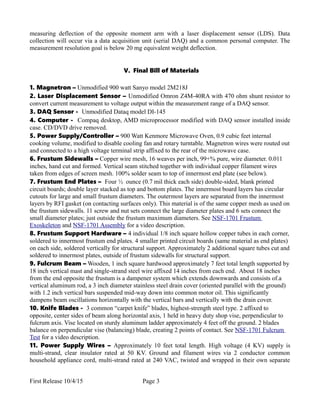The document summarizes the results of Phase I testing of injecting microwave energy into a conical frustum to test for evidence of the "Emdrive Effect", which some claim produces thrust without propellant. Static tests were conducted to ensure no arcing or overheating occurred. Flight tests used a laser sensor to measure any displacement from the frustum mounted on a balance beam when a magnetron injected RF energy. Test 2D found displacement opposite of thermal effects, holding steady against thermal lift, and attenuation of lift during energy injection, which an analyst assessed as evidence of an anomaly with over 95% probability of being different during on/off cycles. The effect averaged about 18mg or 177μN of downward force.





